Charbel Toumieh
Adaptive morphing of wing and tail for stable, resilient, and energy-efficient flight of avian-informed drones
Mar 13, 2024



Abstract:Avian-informed drones feature morphing wing and tail surfaces, enhancing agility and adaptability in flight. Despite their large potential, realising their full capabilities remains challenging due to the lack of generalized control strategies accommodating their large degrees of freedom and cross-coupling effects between their control surfaces. Here we propose a new body-rate controller for avian-informed drones that uses all available actuators to control the motion of the drone. The method exhibits robustness against physical perturbations, turbulent airflow, and even loss of certain actuators mid-flight. Furthermore, wing and tail morphing is leveraged to enhance energy efficiency at 8m/s, 10m/s and 12m/s using in-flight Bayesian optimization. The resulting morphing configurations yield significant gains across all three speeds of up to 11.5% compared to non-morphing configurations and display a strong resemblance to avian flight at different speeds. This research lays the groundwork for the development of autonomous avian-informed drones that operate under diverse wind conditions, emphasizing the role of morphing in improving energy efficiency.
High-Speed Motion Planning for Aerial Swarms in Unknown and Cluttered Environments
Feb 29, 2024



Abstract:Coordinated flight of multiple drones allows to achieve tasks faster such as search and rescue and infrastructure inspection. Thus, pushing the state-of-the-art of aerial swarms in navigation speed and robustness is of tremendous benefit. In particular, being able to account for unexplored/unknown environments when planning trajectories allows for safer flight. In this work, we propose the first high-speed, decentralized, and synchronous motion planning framework (HDSM) for an aerial swarm that explicitly takes into account the unknown/undiscovered parts of the environment. The proposed approach generates an optimized trajectory for each planning agent that avoids obstacles and other planning agents while moving and exploring the environment. The only global information that each agent has is the target location. The generated trajectory is high-speed, safe from unexplored spaces, and brings the agent closer to its goal. The proposed method outperforms four recent state-of-the-art methods in success rate (100% success in reaching the target location), flight speed (67% faster), and flight time (42% lower). Finally, the method is validated on a set of Crazyflie nano-drones as a proof of concept.
Decentralized Multi-Agent Planning for Multirotors: a Fully Online and Communication Latency Robust Approach
Apr 22, 2023



Abstract:There are many industrial, commercial and social applications for multi-agent planning for multirotors such as autonomous agriculture, infrastructure inspection and search and rescue. Thus, improving on the state-of-the-art of multi-agent planning to make it a viable real-world solution is of great benefit. In this work, we propose a new method for multi-agent planning in a static environment that improves our previous work by making it fully online as well as robust to communication latency. The proposed framework generates a global path and a Safe Corridor to avoid static obstacles in an online fashion (generated offline in our previous work). It then generates a time-aware Safe Corridor which takes into account the future positions of other agents to avoid intra-agent collisions. The time-aware Safe Corridor is given with a local reference trajectory to an MIQP (Mixed-Integer Quadratic Problem)/MPC (Model Predictive Control) solver that outputs a safe and optimal trajectory. The planning frequency is adapted to account for communication delays. The proposed method is fully online, real-time, decentralized, and synchronous. It is compared to 3 recent state-of-the-art methods in simulations. It outperforms all methods in robustness and safety as well as flight time. It also outperforms the only other state-of-the-art latency robust method in computation time.
MACE: Multi-Agent Autonomous Collaborative Exploration of Unknown Environments
Aug 16, 2022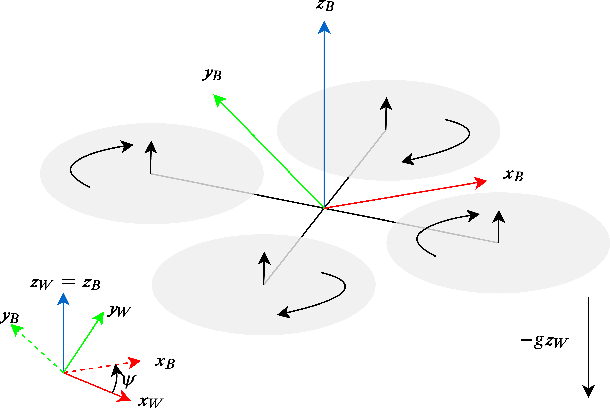
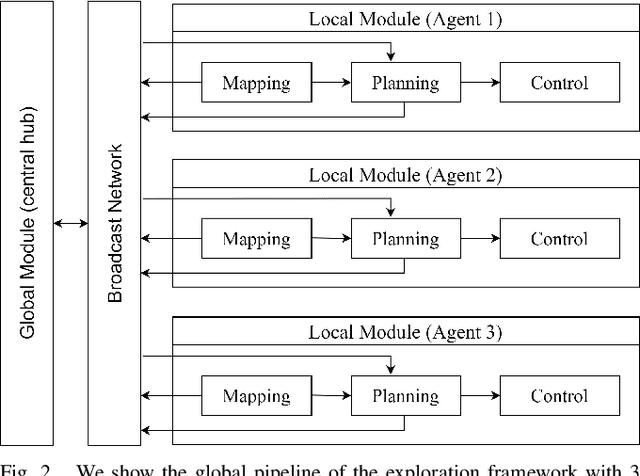
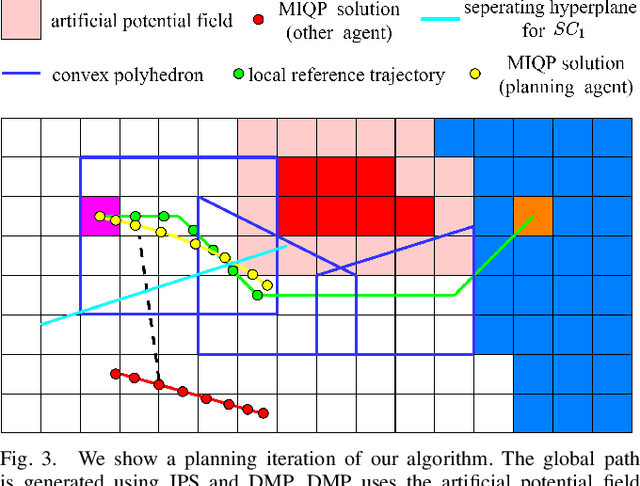
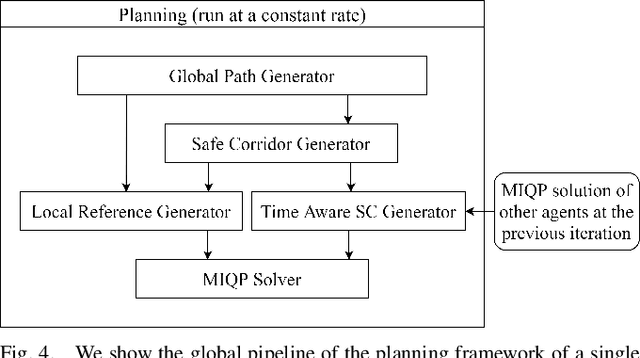
Abstract:In this paper, we propose a new framework for multi-agent collaborative exploration of unknown environments. The proposed method combines state-of-the-art algorithms in mapping, safe corridor generation and multi-agent planning. It first takes a volume that we want to explore, then proceeds to give the multiple agents different goals in order to explore a voxel grid of that volume. The exploration ends when all voxels are discovered as free or occupied, or there is no path found for the remaining undiscovered voxels. The state-of-the-art planning algorithm uses time-aware Safe Corridors to guarantee intra-agent collision safety as well safety from static obstacles. The presented approach is tested in a state of the art simulator for up to 4 agents.
Multirotor Planning in Dynamic Environments using Temporal Safe Corridors
Aug 16, 2022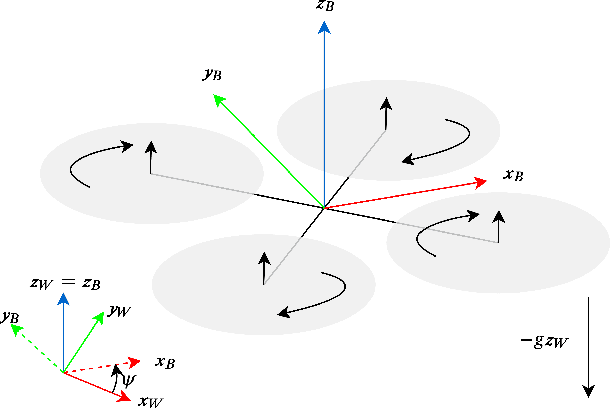
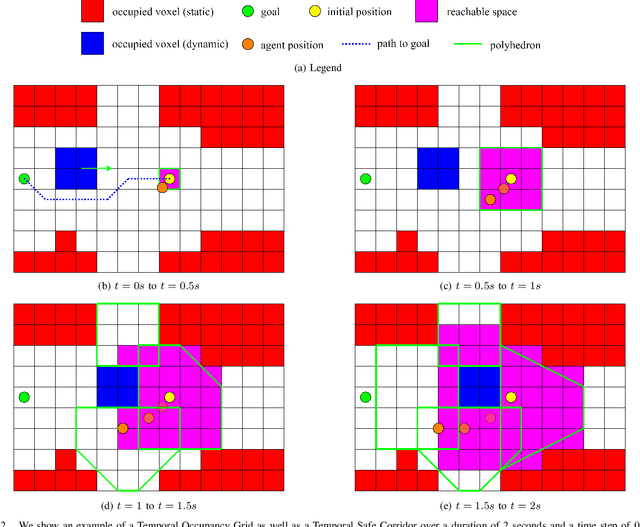
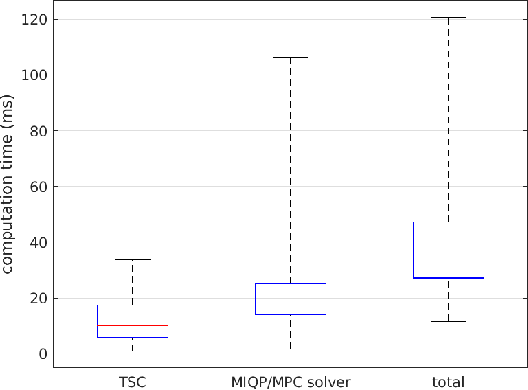
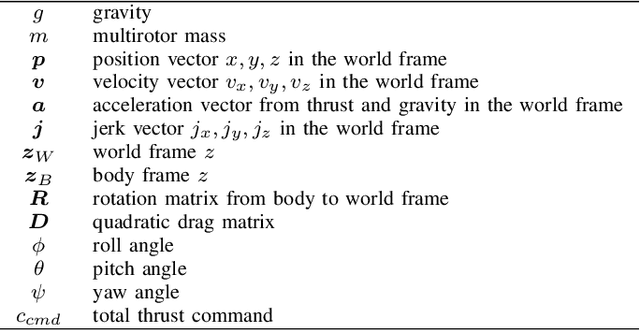
Abstract:In this paper, we propose a new method for multirotor planning in dynamic environments. The environment is represented as a temporal occupancy grid which gives the current as well as the future/predicted state of all the obstacles. The method builds on previous works in Safe Corridor generation and multirotor planning to avoid moving and static obstacles. It first generates a global path to the goal that doesn't take into account the dynamic aspect of the environment. We then use temporal Safe Corridors to generate safe spaces that the robot can be in at discrete instants in the future. Finally we use the temporal Safe Corridors in an optimization formulation that accounts for the multirotor dynamics as well as all the obstacles to generate the trajectory that will be executed by the multirotor's controller. We show the performance of our method in simulations.
Shape-aware Safe Corridors Generation using Voxel Grids
Aug 16, 2022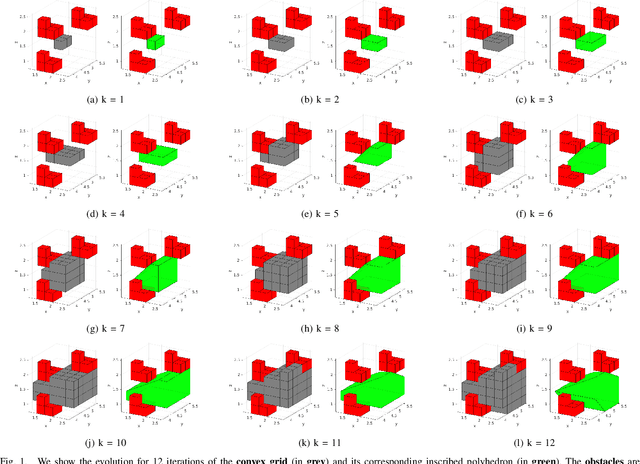
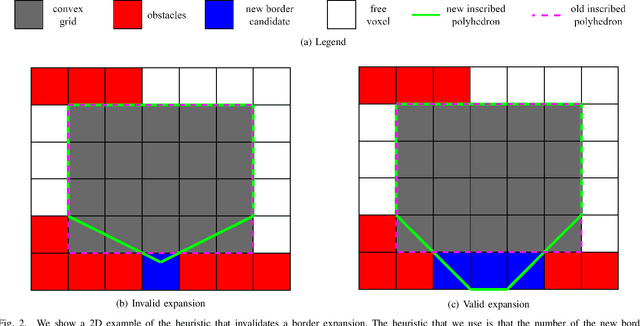
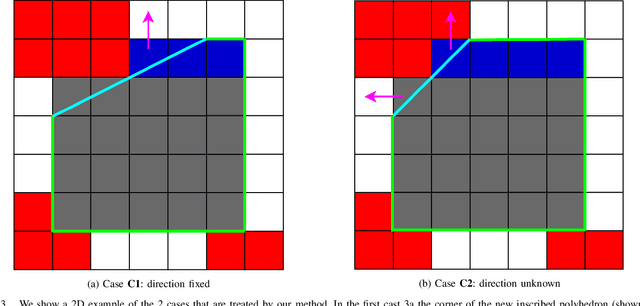

Abstract:Safe Corridors (a series of overlapping convex shapes) have been used recently in multiple state-of-the-art motion planning methods. They allow to represent the free space in the environment in an efficient way for collision avoidance. In this paper, we propose a new framework for generating Safe Corridors. We assume that we have a voxel grid representation of the environment. The proposed framework improves on a previous state-of-the-art voxel grid based Safe Corridor generation method. It also creates a connectivity graph between polyhedra of a given Safe Corridor that allows to know which polyhedra intersect with each other. The connectivity graph can be used in planning methods to reduce computation time. The method is compared to other state-of-the-art methods in simulations in terms of computation time, volume covered, safety, number of polyhedron per Safe Corridor and number of constraints per polyhedron.
GPU Accelerated Voxel Grid Generation for Fast MAV Exploration
Jan 06, 2022



Abstract:Voxel grids are a minimal and efficient environment representation that is used for robot motion planning in numerous tasks. Many state-of-the-art planning algorithms use voxel grids composed of free, occupied and unknown voxels. In this paper we propose a new GPU accelerated algorithm for partitioning the space into a voxel grid with occupied, free and unknown voxels. The proposed approach is low latency and suitable for high speed navigation.
 Add to Chrome
Add to Chrome Add to Firefox
Add to Firefox Add to Edge
Add to Edge